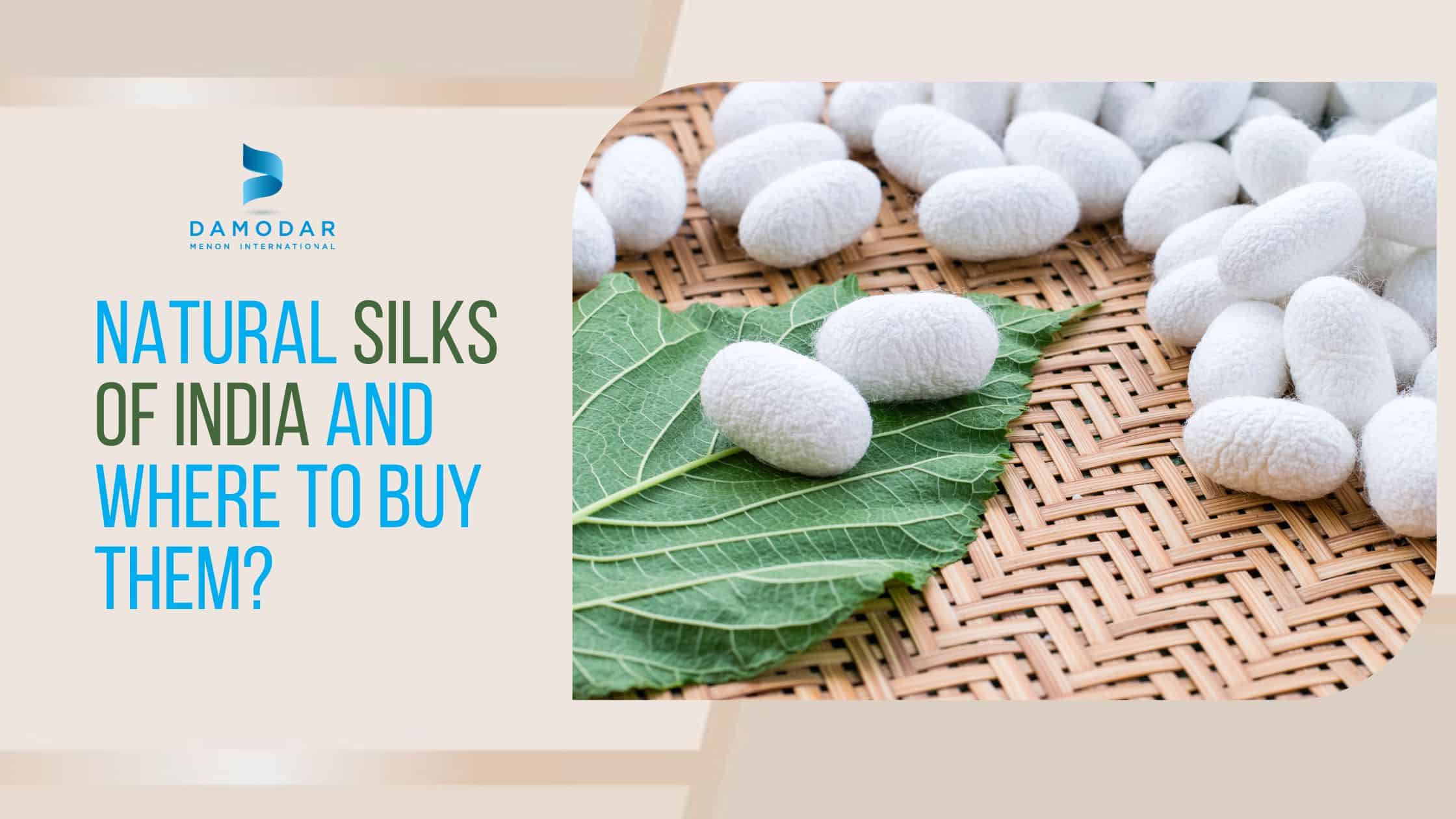When you think of India, you think of its vibrant textile culture. And you also think of Silk. While India is the second largest producer of cotton, with hundreds of silk fabric manufacturers in India and suppliers trading at DMI, it is Silk that defines the Indian textile industry. Did you know that India is also the second-largest silk producer in the world? The sericulture industry employs over 9.5 million people in 59000 villages across 25 states.
Silk (and Cotton) are the only industries that have survived and scaled through the industrialization wave.
Whether it is a wedding or a baby shower, a housewarming ceremony, or an anniversary, Silk has graced many occasions, homes, and emotions over the past several centuries. Indian silk is creating a global aspirational value presently. In fact, the sericulture industry is one of the largest foreign currency generators for the country.
Silk Export Trend
While silk fabric manufacturers in India earn a big hunk from exporting silk fabrics and readymade garments, India also exports raw silk, natural silk yarn, silk waste, and handlooms.
Indian silk and silk products exports were valued at USD 248.56 million in 2021 – 2022. While cotton suppliers, viscose, and polyester yarn manufacturers in India struggled to break even ROI, silk exports significantly increased by 25.3% from the previous year despite covid restrictions and supply chain disruptions.
Silk readymade garments and silk fabric manufacturers in India earned a major export share of 36.3% and 45.5%, respectively, in the last financial year. The share of other silk textiles in total exports included silk waste at 11.3%, silk carpets at 4.3%, and natural silk yarn at 2.8%.
India enjoys a distinct global position when it comes to producing and exporting all commercially valuable types of silk. To promote Indian sericulture and silk products globally, the Government of India has taken several steps, including setting up trade fairs, events, and fashion shows.
Regions that Import Silk from India
Indian silk and silk products are highly valued in the global textile industry. Indian silk manufacturers and textile companies in India export silk products to more than 30 countries worldwide. The USA was India’s top silk importer in 2022, having invested INR 485.34 billion in silk textiles, at a share of 29%.
The United States’ major silk exports primarily include natural silk yarn, readymade outfits, and silk fabrics, with 40% of the total silk exported.
UAE was the second largest importer of Indian silk textiles, with a share of 10%, followed by China, the UK, and Australia.
Other prominent importers of Silk from India are Germany, France, Spain, Italy, Malaysia, Canada, South Africa, Singapore, Belgium, Nepal, and Japan.
Different Types of Silk in India
The vast majority of silk production in the world takes place in Asia (more than 95%), with India and China accounting for 80% of its total production.
India is the kingdom of silk production, and we have a rich and efficient Sericulture Industry. Silk in India is categorized into two types – Mulberry and Non-Mulberry. The type is determined based on two factors: the silkworm species and the leaves the worms eat before they start weaving the cocoon.
Mulberry Silk
India is the second largest producer of Mulberry silk, which is the most common form of silk, accounting for 90% the worldwide silk production. It is harvested from the Bombyx mori worms that exclusively feed on mulberry tree leaves.
Owing to its naturally soft and smooth texture, strong yarn, lustrous appearance, and rich sheen, Mulberry silk is used for creating high-end fashion garments, such as sarees, ties, scarves, and bedding materials.
Non-Mulberry Silk
Non-Mulberry Silk is farmed from silkworms other than Bombyx Mori moth. Non-Mulberry silk in India has three major varieties: Eri, Tusshar, and Muga. Different species of silkworms produce them and have unique characteristics. But they are collectively called Vanya Silk because they are slightly wilder than the Bombyx mori worms.
Non-Mulberry silks are versatile and available in different textures and colors. They are extensively used for creating beautiful traditional garments, handicrafts, and home decor.
Silk Production in India
Most of the silk production in India takes place in South and North East India. Karnataka, Andhra Pradesh, Assam, and Jharkhand are the top silk yarn and fabric manufacturers in India.
However, officially, India’s Sericulture Sector is divided into five zones, each having its own weaves, choices of colors, and patterns. The constituting states in each zone include the following:
- Tamil Nadu, Karnataka, Maharashtra, Telangana, Andhra Pradesh, and Kerala: Account for 66% of the silk production.
- Assam, Sikkim, Meghalaya, Manipur, Arunachal Pradesh, Nagaland, Mizoram, and Tripura: Account for 22% of the silk production.
- West Bengal, Jharkhand, Odisha, and Bihar: Approx 10% of silk production.
- Uttar Pradesh, Chhattisgarh, Rajasthan, Madhya Pradesh, and Gujarat.
- Punjab, Haryana, Jammu and Kashmir, Uttarakhand, and Himachal Pradesh.
Buy and Sell Raw Silk and Silk Products through DMI Trading Experts
There is a great opportunity for silk fabric companies in India to export silk overseas through DMI textile trading. We receive different inquiries from top buyers worldwide. To expand your reach, connect with our traders today. We provide cost-effective and profitable solutions for silk and cotton suppliers.
If you are looking for online trading options, register on our eCommerce Marketplace –TEXchange Global.
TEXchange is the leading textile B2B marketplace with over 500 active buyers and sellers from the industry. You can join this number and enjoy significant growth and sales through the powerful eCommerce marketplace.

